Adrian Geller
Liste Year
Year of Birth
Country of Birth
Presented by
2022
1997
Switzerland
Super Dakota
Adrian Geller (b. 1997) is a Swiss artist based in Paris. His paintings trace back to the contemplation of the Goethean heroes, gypsies or oriental artisans, travelling to unearth their own peace and serenity trough wild and dramatic landscapes, and in the process uncovering reality’s detachment from nature thus becoming unnatural.
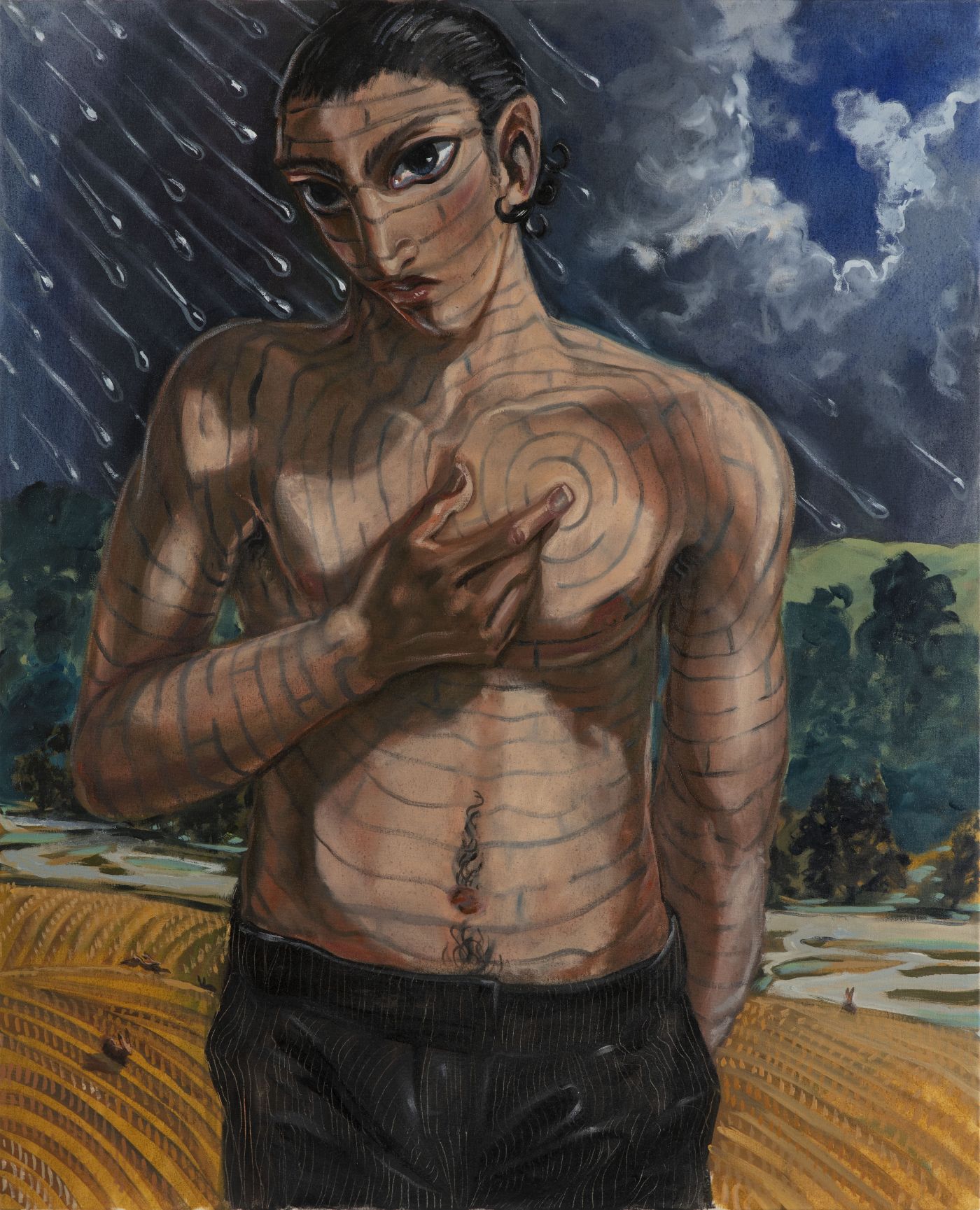
For Liste 2022 Adrian Geller composed an enigmatic universe exploring ideas found in folklore, literature, culture and History to question and re-imagine a symbiotic bond between humans and nature. Wildly based on the Swiss folk song “Guggisberglied”, these works portrait a lonely journey through the valleys of self-discovering.
With this body of work I wanted to talk about living in, with, against and over Nature. Embracing the distance we put in-between the animal world and the human world, and breaking it as well. How industrialisation and the idea of economic growth has come to overtake everyones ideals and morals. The pieces within this body of work deal with the notion of travelling, as it is the moment we are most vulnerable and close to the outdoors. - Adrian Geller
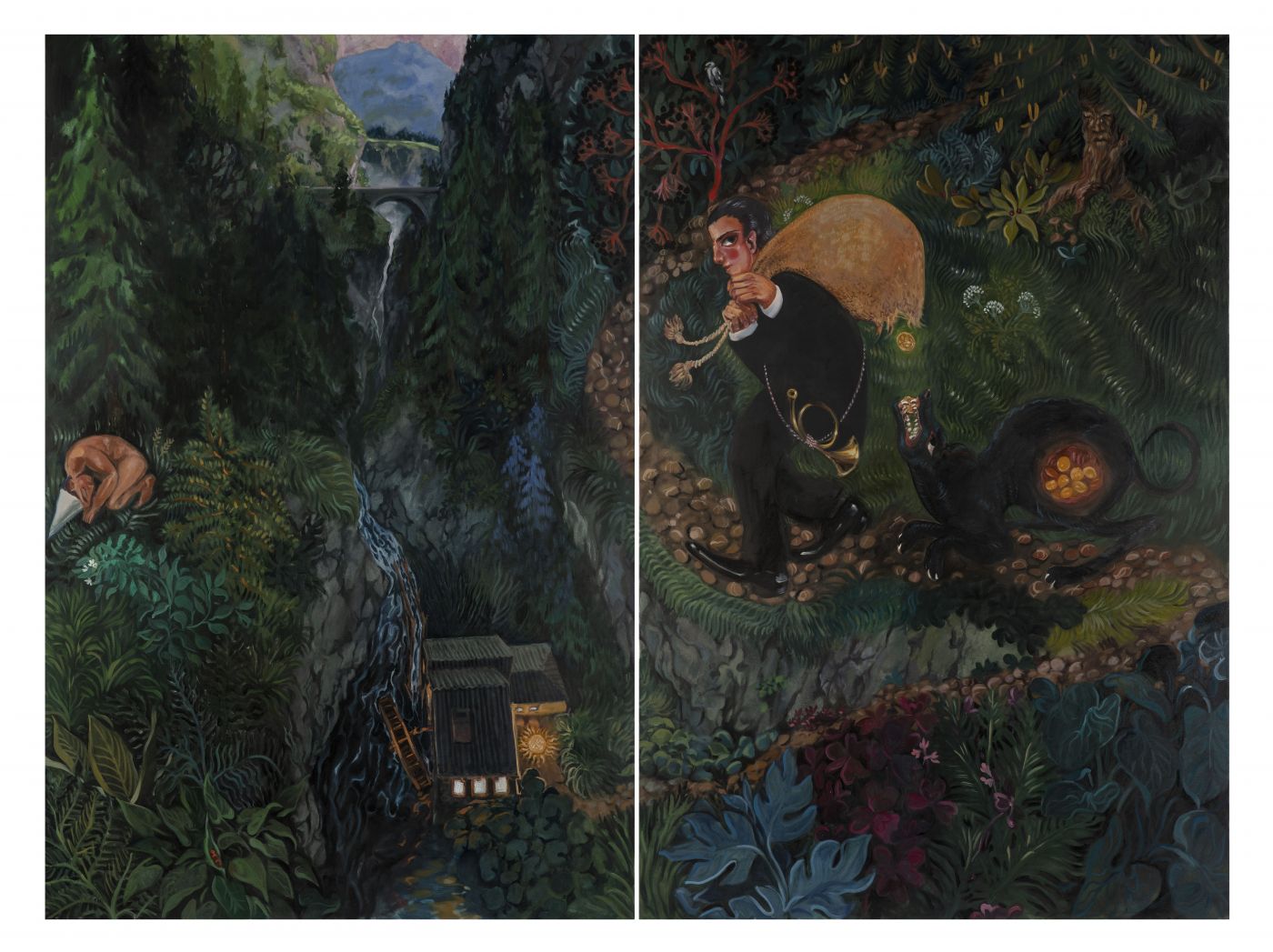
Mixing millenary symbols, legends, local folklore and inherent social structures which govern our globalised and capitalist society, Adrian Geller creates a scenario which bring us to question the basis of our existence through various narratives such as social constructs, environment, capitalism, and labor.

The paintings within this body of work converse between one another. "The broken mill wheel", 2022, the biggest painting in the booth, announce the setting of this journey. The dog and the man, two sides of the same coin, move away from the depth of the valley where lays a humble mill wheel and its humiliated keeper. Up in the hill “The devil’s bridge” allows the traveler’s transit and suggests a meeting point between two entities. A lot of ancient bridges across Europe are referred to as the Devil’s Bridge giving the challenging conditions in which they were built. Crossing one of them requ ...
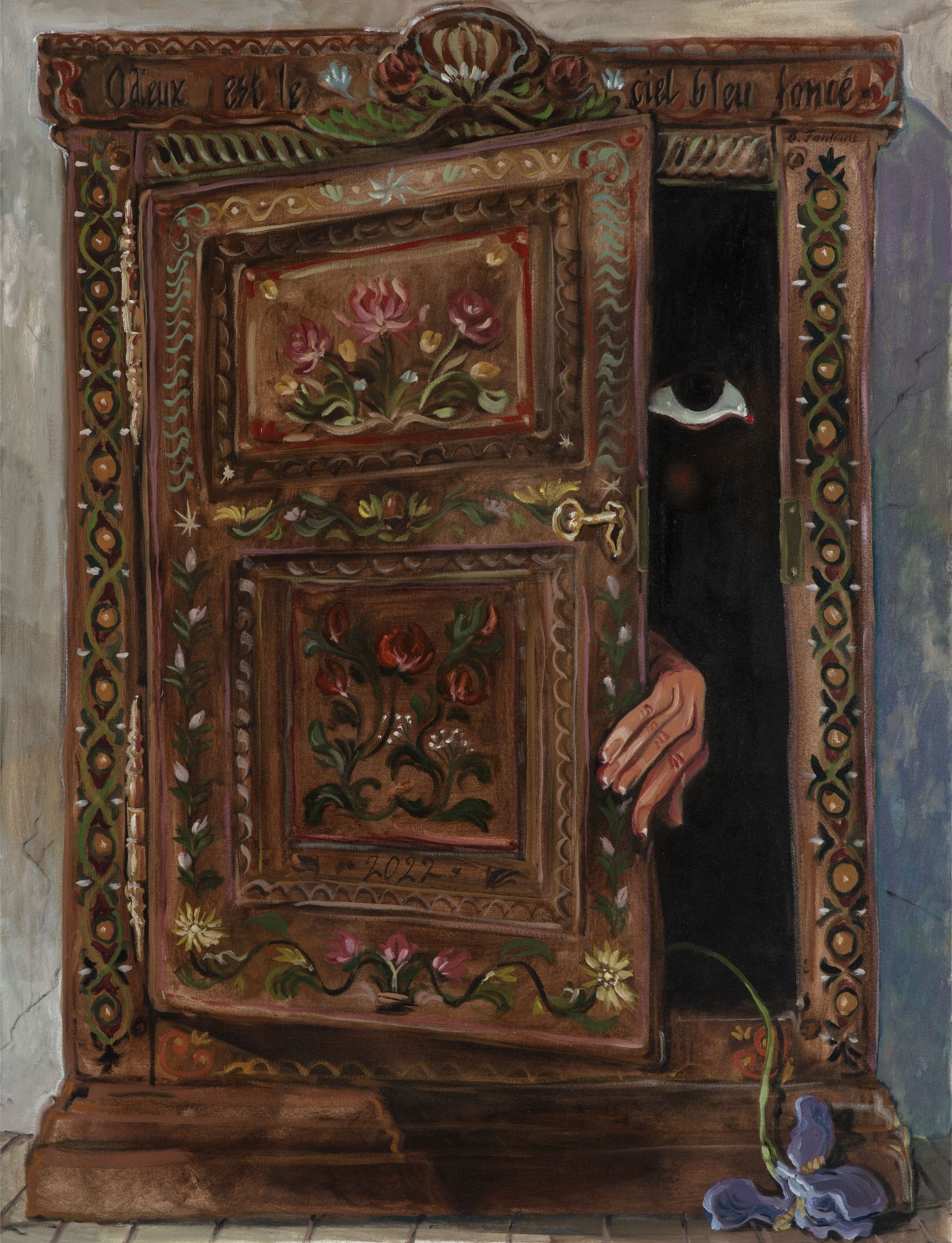

Populated by recurring male characters confronted to their most primitive instincts, Adrian Geller’s paintings make use of symbols to depict an oasis within a complex and ancient bond. Figures of the dog, goat or sheep, which have had different connotations throughout Art History, are a constant reminder of our wildness. On the other hand, the suited men unmistakably represent the archetype of labor, and more specifically the concrete servitude to the corporate world. These businessmen appear to be consumed by hoarding and monetizing while manifesting a feeling of melancholy. They are torn between their personal quests and their external social appearances, uncapable of fully exploring their innate impulses nor giving up the comfort brought by a socially acceptable lifestyle. The interaction between these characters, the man and his alter egos, is at times ambiguous and includes all scopes of a complex relationship: violence, tenderness, companionship, desire…
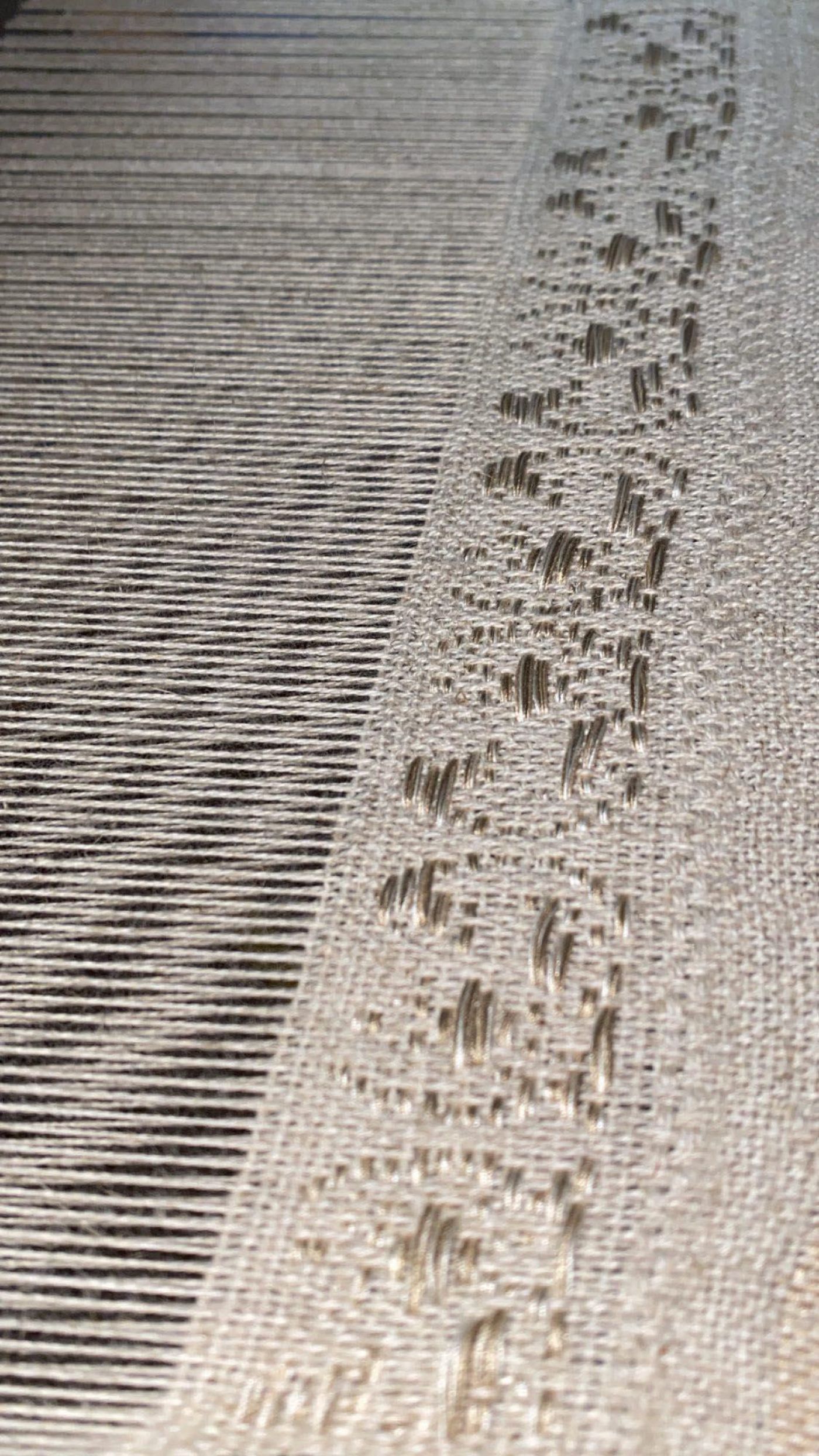
The practice of embroidering is a recurring feature in the artist’s work – either embedded in the paintings or materialised on his textile pieces – and it is linked to an act of patience and contemplation. The idea of creating something with one’s own hands symbolizes a return to a simpler time when our relation to nature was different, when objects were created at a slower pace.
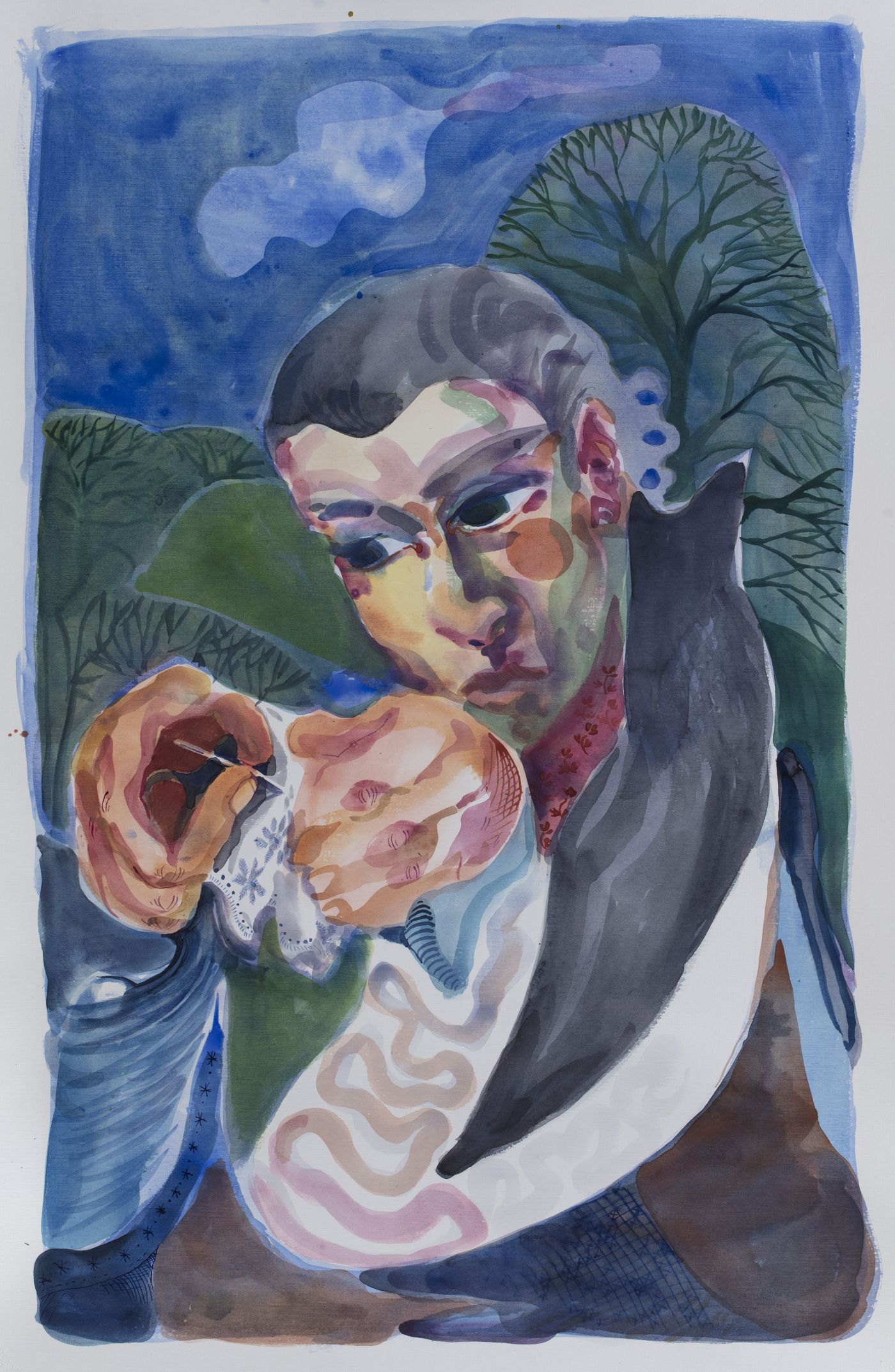
Depicted as both enchanting and menacing, in Adrian Geller’s paintings nature presents anthropomorphic qualities borrowed from cartoon and animation imagery, as a way to appeal to our social imaginary. Men, animals and vegetation, all genetically hard-wired to behaviours that enhance our ability to cope with vital environmental circumstances, are all connected and in direct relation to one another. These paintings point out the complexities of these relationships and the emotional and physical effects one can have on the other.
"Museau curieux
Des pattes attrapent
Cachent en attrape
frappent le nez
doucement s’avance
le felin calin,
ronronne tout bas
chasse au pas lent
la proie à dent
Longue hésite
A peur
Non
Prend courage
Et se lance
Dans les pattes
Du prédateur en rage
Amoureux naufrage
Sursaut hors sol
Sousbois remués
Miroir blanc incolore
Qui s’échappe
En trace sinuée
D’oreilles larges
qu’écoutent en playback
Le danger immédiat
De notre presence
Alors que l’echo
Du bruitage bruissant
Le feuillage diverge
Du chemin
De l’evadée
Je suis serein »
Adrian Geller
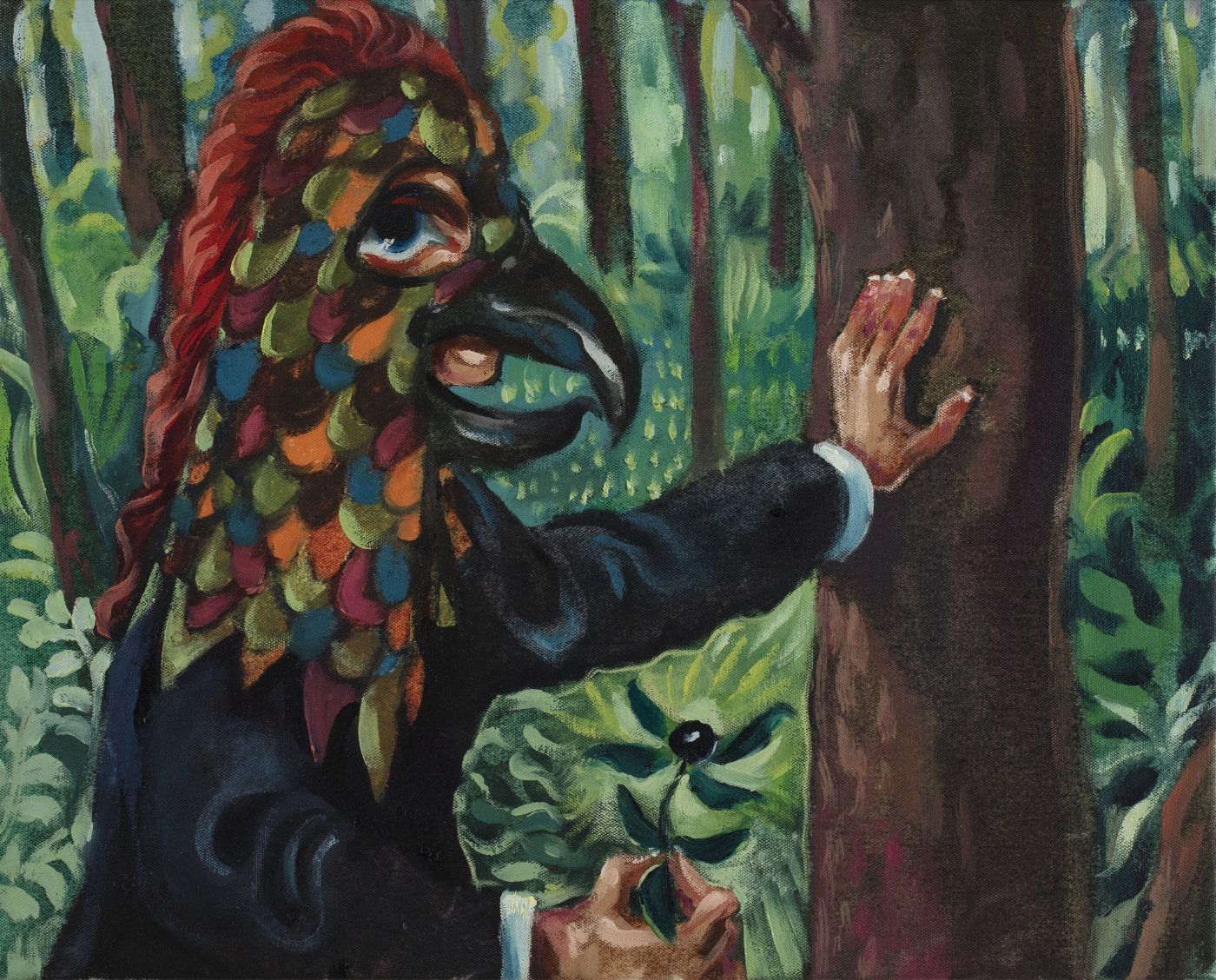
The works question the closeness to the spirits, the rocks, the animals, the dark, the weather pulling from well known images such as Grimm’s fairytales, children stories, folk songs, the way old tales were told, about the four-leaf-clover, the big golden coins, the intelligent fox, the wolf’s stomach and washing the hands of a stranger. "Le douteux et sauvage état de l’errance." Adrian Geller
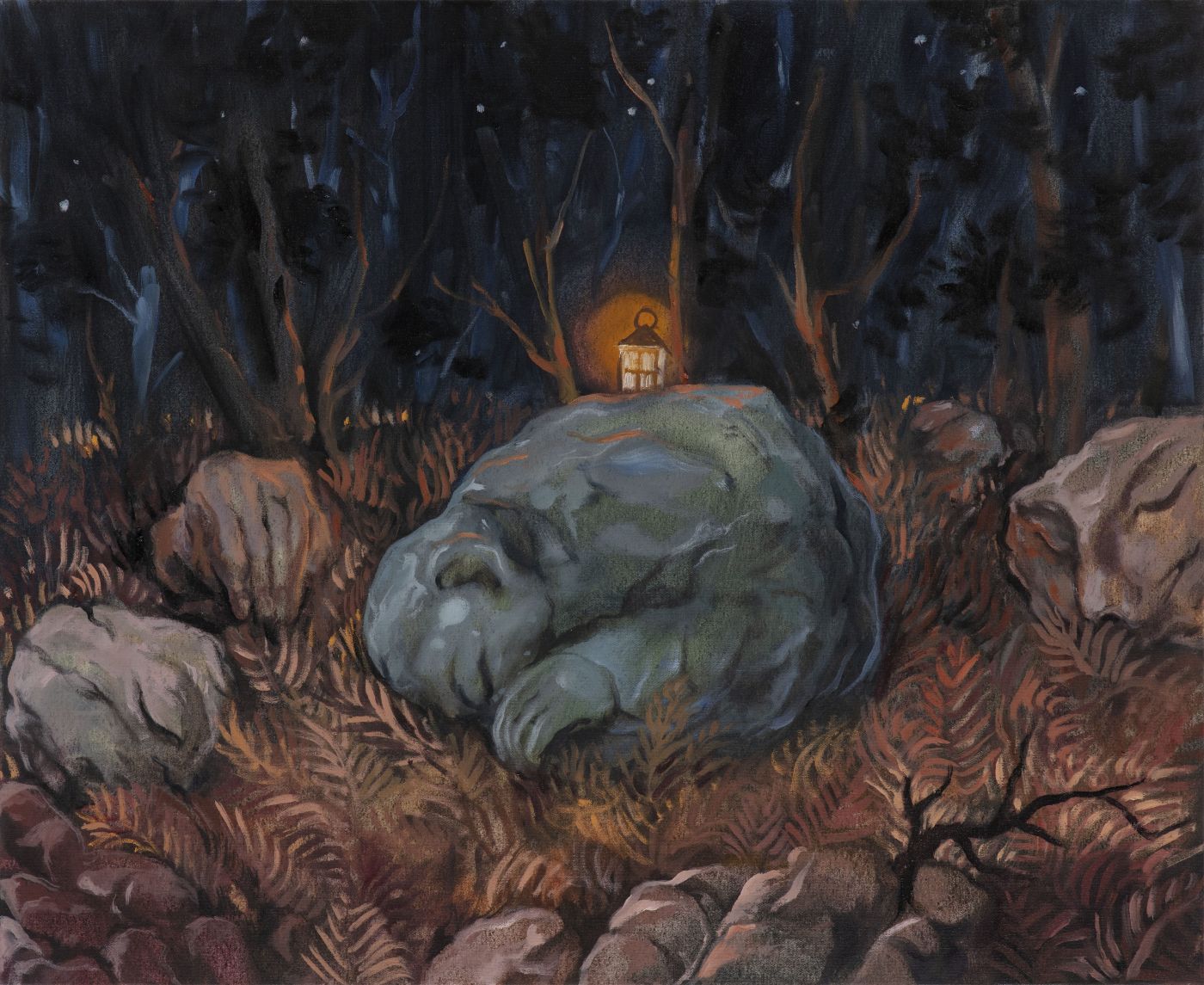
The relevance and accuracy of Geller’s recreated world resides in his questioning and re-imagining of a symbiotic bond between humans and nature. At a time when environmental and sociological crises have unpredictable impacts on our collective experience, and life in general, Adrian Geller unveils our very own condition and leaves us gazing at the world in disbelief.
Adrian Geller studied illustration at the atelier Angoulême, France, and at the Beaux-Arts de Paris. Recent exhibitions include Villa Noailles, in Hyères, Chez Valentin, in Paris, Stone Oven House, in Turin, Galerie Joseph, Paris.